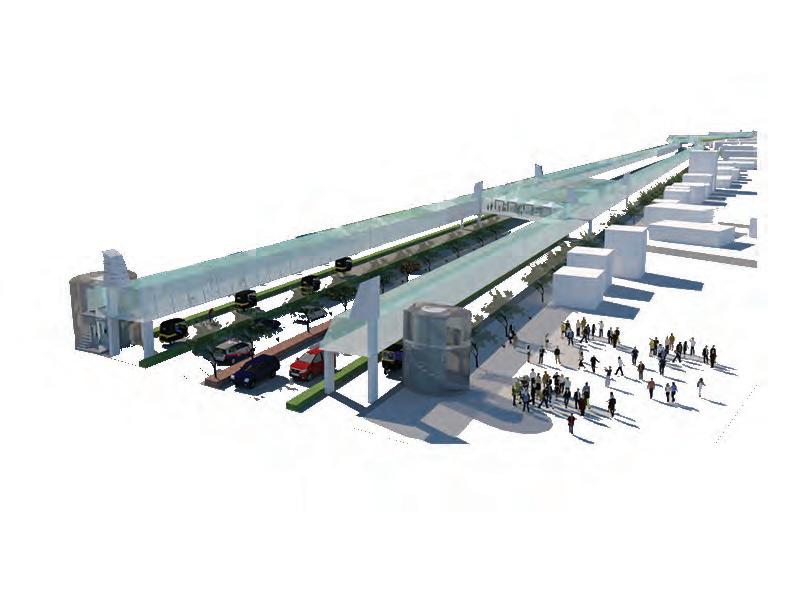
2 minute read
A Mile of Fresh Air | Impact of Traffic Congestion on Delhi’s Lungs
Impact of Traffic Congestion on Delhi’s Lungs
December, 2020
Advertisement
NEW Delhi, the capital city of India suffers from deteriorating air-quality due to vehicular pollution, making it the most polluted major city in the world. The poor air quality is equivalent to smoking 40 cigarettes a day, irreversibly damaging the lungs of millions. This urban intervention design project proposes an air-purifying pedestrian skywalk to tackle the issues of air pollution, traffic congestion and pedestrian safety all in one go.
A mile long pedestrian skywalk connecting a shopping mall to the nearest subway, not only modifies the street-layout introducing segregated laneways for auto-rickshaws and emergency services but also emphasizes on the need for a sensitive design with clean and walkab- -le streets for pedestrian comfort. It includes elements such as air-purifying screens designed in the form of traditional Indian jalis, coated with titanium dioxide which activates a chemical reaction when sun’s UV rays hit the screen, converting the smoggy nitrogen dioxide to less harmful substances. Pigeon Towers are also located on the skywalk paying homage to the ancient Indian architecture.
This project raises questions of what are we as a city becoming and what we are denying?
With the smoke and smog, the disease and pollution, the city had stopped breathing long before COVID-19 hit. This project offers an opportunity for the citizens to step back, and breathe.

This set showcases the modified street layout to accommodate a pedestrian skywalk and separate lanes to allow people to move faster, safely and conveniently. Underneath the skywalk is a dedicated lane for two wheelers and three wheelers including bicycles, motorbikes and auto-rickshaws. The street vendors which previously clogged the sidewalks on the New Delhi streets would be relocated inside the skywalk, clearing up the streets further.

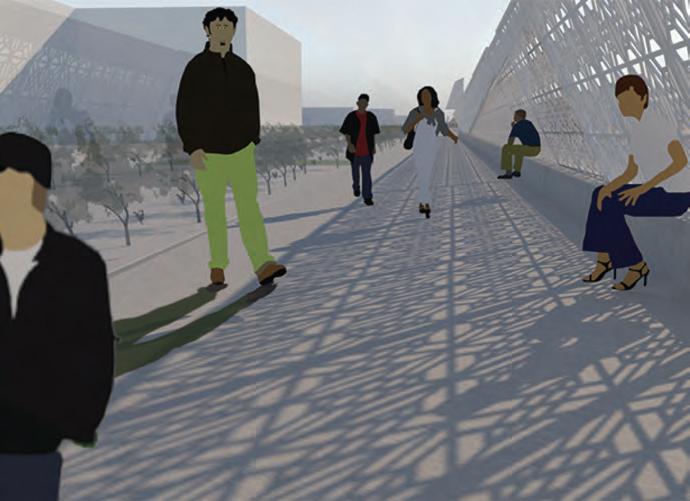


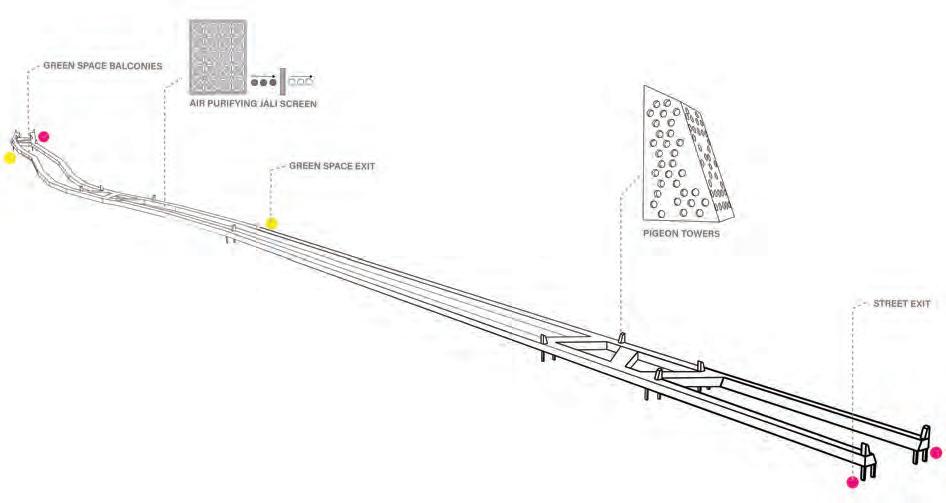
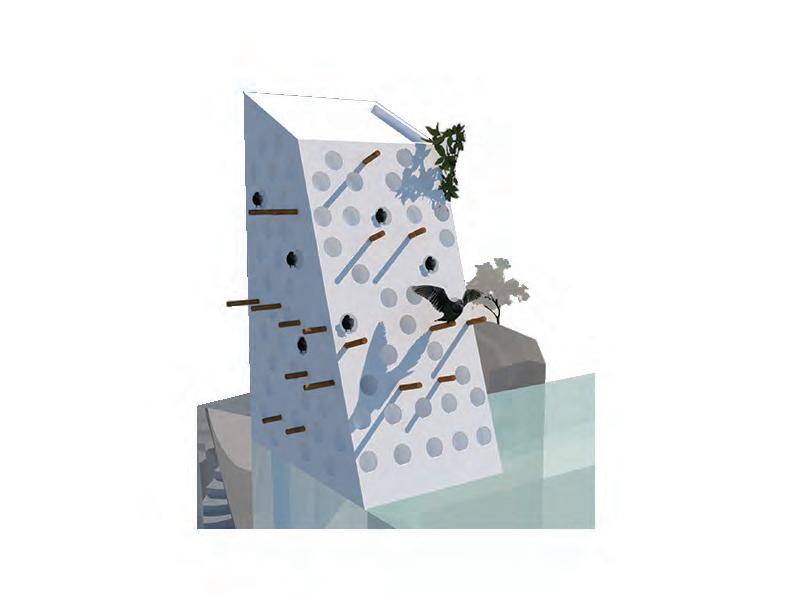
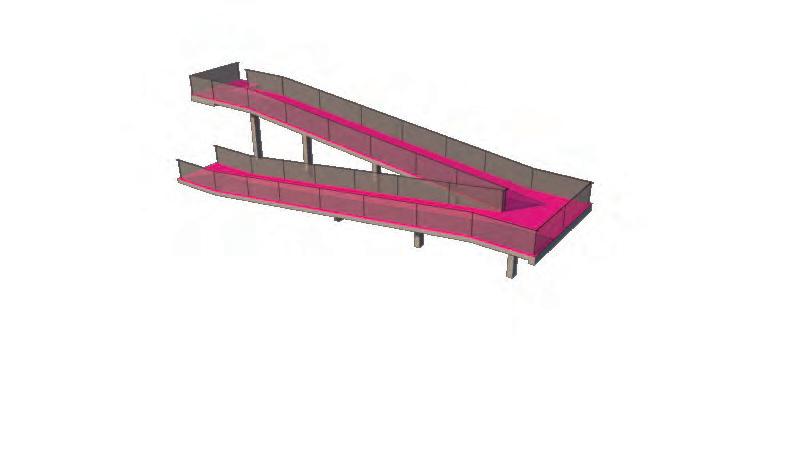
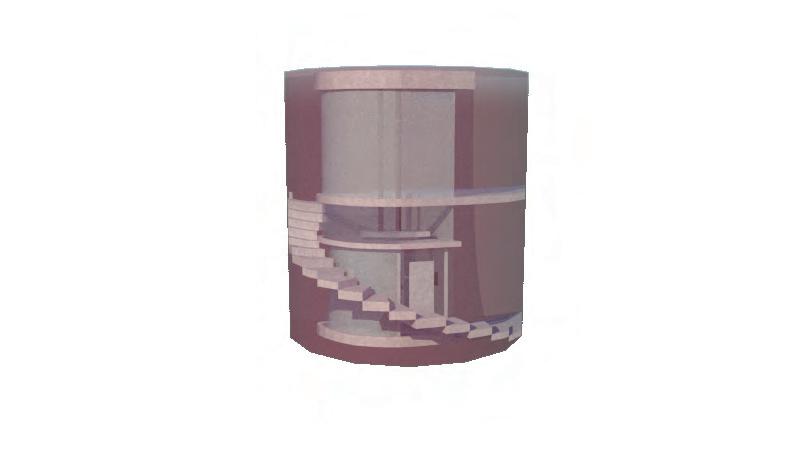

The skywalk concentrates on reducing the impact on the natural environment. It has openings like balconies near the green spaces on the site, creating a point of access/exit into “breathable pockets” of the city. The air purifying jali screens “inhale” the polluted air and “exhales” clear air. Celebrating the point of intersections in the skywalk are pigeon towers acting as resting and feeding spaces for the pigeons. They are representative of ancient Hindu culture for which Delhi is known, promoting the religiously believed auspicious deed to feed pigeons.
